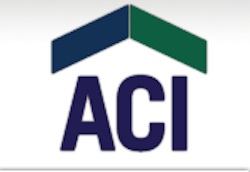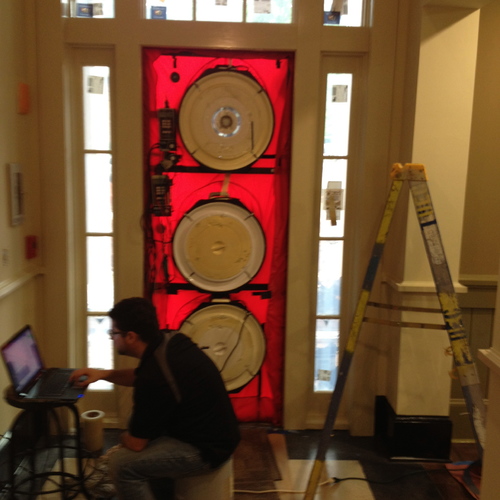
I recently returned from my third ACI conference in Austin. Formerly known as Affordable Comfort, this get-together is another geekfest on par with Resnet, but with a broader appeal. Until recently, ACI was a relatively small affair, appealing to the narrow and evolving home performance industry. Attendance this year was up dramatically to almost 2,000 people. The increase in attendance was due, in no small part, to the billions of dollars in federal stimulus funding going to energy efficiency, including the low-income Weatherization Assistance Program (WAP), the Retrofit Ramp Up grants announced during the conference, and the expected approval of Home Star, aka “Cash for Caulkers.”
Attendees included WAP team members, government staffers involved in energy efficiency, software purveyors looking for customers for their new products, and dozens of home performance contractors, ranging from one-man shops to national organizations, some well established and some still a gleam in their founders’ eyes. ACI has one of the most extensive education programs for a small conference, with eight or more sessions running concurrently from early morning to as late as 9 pm.
We’ve been here before
The home performance (HP) business, and Home Star in particular, was the subject of most of the discussion and several education sessions. I first learned about HP when Home Performance with Energy Star was being developed in the Atlanta market. I was immediately intrigued with the program, but chose not to get involved as I couldn’t see how I could mesh it with my then full-line remodeling company. Now, many years later, while few companies have created an effective business model, HP is on the brink of rapid expansion with the help of Home Star. It is very exciting that HP may finally reach its potential with the help of Home Star, but I am concerned that the industry is hitching its wagon to a government program that, while helping it ramp up, may ultimately leave it stranded and unable to support itself when funding ends.
HP has been most successful where there are good incentive programs, but it struggles elsewhere. From my first introduction to HP, I thought that it was a system designed and managed by building science professionals who lack the the skills to market and sell it effectively. What is needed to make HP viable, in my humble opinion, is to turn over the sales process to professional sales teams while maintaining the integrity and quality assurance that the best programs offer. There was some indication of this beginning to happen at ACI, but HP has a long way to go.
Biggest opportunity
I wrote an article in Home Energy magazine several years ago titled “Home Performance in the Remodeling Industry.” In the article I discussed the idea of introducing home performance work to homeowners before or during the construction process. I believe that Home Star, if and when it is approved, will provide full-line remodeling contractors an opportunity to improve energy efficiency by including HP work in their projects at very little additional cost to their clients. In some areas, owners and contractors will be able to double- or triple-dip by claiming credits or grants from multiple programs for the same work. I am sure that none of this will go as smoothly as we might wish; these are government programs we are dealing with, after all. But contractors who learn how to successfully navigate the choppy waters of federal, local, and state programs to take advantage of these incentives can benefit themselves and their clients, and, if only incrementally, reduce energy use one house at a time.
Weekly Newsletter
Get building science and energy efficiency advice, plus special offers, in your inbox.















4 Comments
open cell foam vs. spray applied radiant heat barrier (paint)
We have a 50 yr. old home with some floored storage in attic and worn out fiberglass insulation in unfloored area, no HVAC there but some duct work. Am trying to improve comfort level on top floor and reduce energy costs. Have had estimates to have radiant barrier paint and additional blown insulation added and had an estimate to have open cell foam (Demilec) applied and encapsulate the attic. The question is not only which makes the most sense to do, but if we do use the open cell foam there is a question as to whether the best choice is to spray directly on the roof decking or to do it with a baffle system that essentially leaves a breathing space around the entire encapsulated space and supposedly keeps my roof happier. Oh yeah.....then there is the vapor question!! I am so confused. Any advice? Thank you.
Try posting this on the Q&A section
You'll but a much broader response from the entire crew if you do that.https://www.greenbuildingadvisor.com/qa
Reply to J. Ingols
J. Ingols,
If cost is not a factor, it makes more sense to insulate the roof plane so that you bring your attic (and the attic ductwork) into the conditioned space of your home.
"Radiant barrier paint" is a scam. No paint exists that meets the technical definition of a radiant barrier. Even if it did, its effects are small compared to insulation.
You can insulate your sloped ceiling with either open-cell or closed-cell spray foam; the installation can either include ventilation under the roof deck or have no ventilation. If the installers are conscientious and the specs are good, all of the above options can work well.
The higher the R-value, the better the job. Get the highest R-value you can afford. Beware: some spray foam contractors try to convince customers that spray foam can be installed with lower R-values than the minimum code requirement. Insist that your spray foam insulation at least meet the minimum R-value under your local building code.
Handouts and audio from ACI available
ACI has posted handouts from sessions as well as audio from select talks on their website for free download:
http://www.affordablecomfort.org/event/aci_home_performance_conference_2010/handouts
Log in or create an account to post a comment.
Sign up Log in